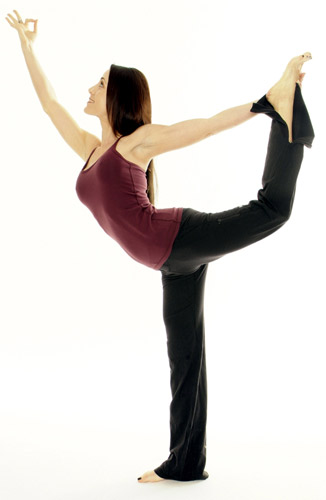In light of Prince William and Catherine Middleton's divine celebration of love worldwide, I felt it fitting to define the meaning of what it is to be "royal." Throughout the centuries, we have equated the term with that of being superior. Yet, the definition of royal is that of "relating to, or in the service of a kingdom." Prince William and Kate Middleton are such an exquisite example of a man and woman joining in royal union with an undertone of simplicity, service and humility. Their mannerisms are refined. Their dress is tasteful. Their behaviors exude respectfulness. It is absolutely refreshing to witness the wedding of a truly balanced romantic relationship, and it is about time that we have had such an example in the public eye. Hopefully the fans of the reality show Jersey Shore will be able to spot this charming difference.
The word "royal" brings to mind a form of yoga, based on the same definition. The Sanskrit word, raja also means "royal" and signifies a prince, chief or ruler in India or South Asia. When joined with the word yoga, which means "union," raja yoga translates as "royal union." It is also known as ashtanga yoga, or "the eight limbed path," and also "the royal path." This form of yoga is based on the cultivation of the mind using meditation so as to further one's understanding of reality and to achieve liberation and ultimately enlightenment. A large aspect of this royal path is, fittingly, service. In this sense raja yoga is called the "king among yogas" wherein all yogic practices, considered to be the starting point in the quest to cleanse karma through rightful acts and mindfulness.
Raja yoga is primarily concerned with the mind. The mind is traditionally conceived as the "king" of the mind-body phenomenon which rules our existence (whether or not one is aware of this). Because of the relationship between the mind and the body, the body must be first "tamed" through self-discipline and purified by various means of physical yoga postures. A good level of overall health and psychological balance must be attained before the deeper aspects of yoga can be approached. Humans develop all sorts of addictions and obsessions and these preclude the attainment of tranquil awareness (meditation).
Through restraint (yama) such as abstaining from intoxicants and careful attention to one's actions of body, speech and mind, the human being becomes fit to practice meditation. This yoke that one puts upon oneself (discipline) is another meaning of the word yoga. When the self is mastered, one realizes their true purpose and how to serve. This is the state of royalty that we all have the ability to achieve.
Naṭarājāsana, Sanskrit for "royal dancer pose" is a hatha yoga posture. The name comes from the Sanskrit words nata meaning "dancer," raja meaning "royal," and asana meaning "posture" or "seat." Nataraja is one of the names given to the Hindu God Shiva in his form as the cosmic dancer. The royal dancer symbolizes the constant flow of energy and matter. It represents the destruction of the old self in preparation for the creation of a new one. The physical posture is a balancing back bend which cultivates an open heart and helps you uncover one's inner radiance.

Victoria Davis
To practice royal dancer pose:
Start standing. Feel rooted in your left foot while spreading your toes and keeping your weight equally distributed throughout the foot while you bend your right knee, shifting all of your weight onto your left foot. Lift your right heel toward your right buttock as you bend the knee. Turn the right hand palm out with the thumb pointing to the behind you. Gaze at a point on the floor in front of you for balance. As you inhale deeply, grasp the right foot up and hold onto the foot or ankle with the right hand. Square your hips to the front and slowly bend forward from the top of the left leg.
As you lift your right foot up, away from the floor, extend the right thigh behind you aligning it parallel to the floor. Stretch your left arm forward, in front of your torso, parallel to the floor with your fingers pointed forward and your palm facing down. As you do this, look straight ahead gazing at a steady point.
The action of having the left arm and leg lifting forms a bow behind you, and the pose is sometimes referred to as "standing bow." Play with the tension. As you extend your leg higher, Your body opens in the backbend and your chest may go toward the floor as part of the opening. Feel the royal grace in the pose and hold for five to eight long, deep breaths. Release the pose, and repeat on the other side.
I hope today that we are all reminded of our own royal path, and our own royal union with our self, as we discover once again that our greatest purpose is to serve.
"I don't know what your destiny will be, but one thing I do know: the only ones among you who will be really happy are those who have sought and found how to serve."
-- Albert Schweitzer